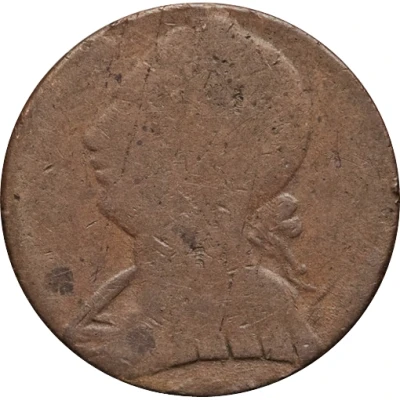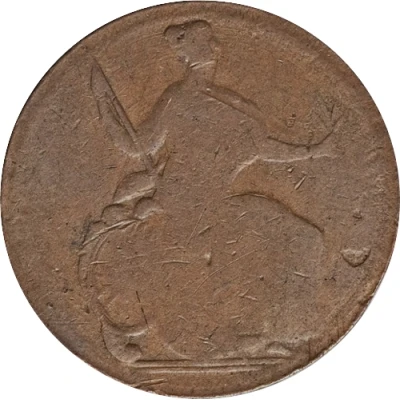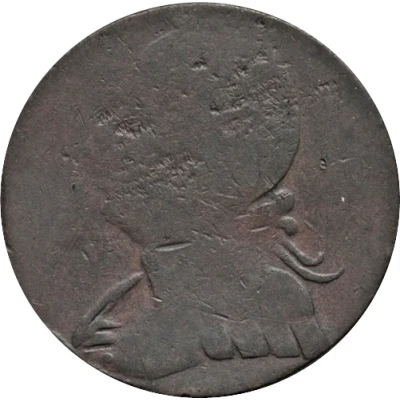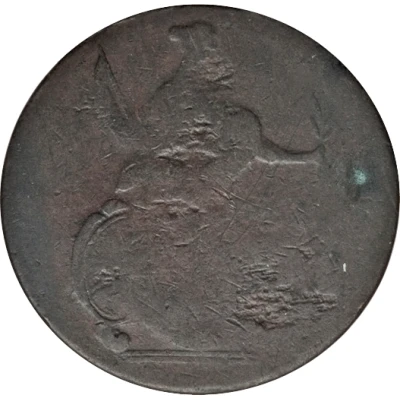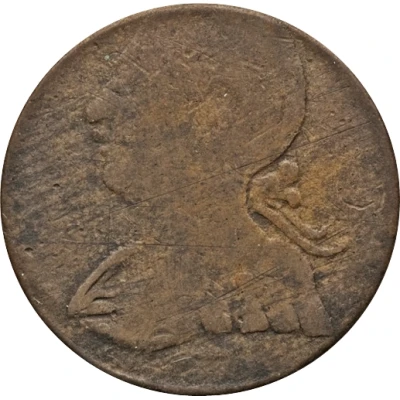
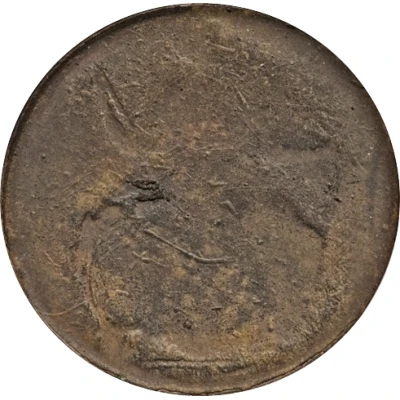

© Heritage Auctions
½ Penny Regal Imitation - George III left ND
1835 year| Brass | 6.5 g | 26.5 mm |
| Issuer | Canadian provinces (Canada) |
|---|---|
| Type | Token |
| Year | 1835 |
| Value | ½ Penny (1⁄480) |
| Currency | Pound |
| Composition | Brass |
| Weight | 6.5 g |
| Diameter | 26.5 mm |
| Shape | Round |
| Orientation | Variable alignment ↺ |
| Demonetized | Yes |
| Updated | 2024-10-04 |
| Numista | N#104159 |
|---|---|
| Rarity index | 94% |
Reverse
Crude Britannia seated right.
Edge
Plain
Comment
Diameter: 26.3 - 26.7mm
Obverse : Mouth is slightly open with larger Adams apple and humped shoulder. The double bow has a larger upper loop with both ribbon ends pointing upwards.
Reverse : From a worn die of BL-1.
BL-2A1 → Copper, Thick flan, Early issue, Medal alignment, Weight: 6.5 - 9.5g
BL-2A2 → Copper, Thick flan, Early issue, Coin alignment, Weight: 5.8g
BL-2A3 → Copper, Thin flan, Late issue, Coin alignment, Weight: 3.7 - 4.3g
BL-2A4 → Brass, Weight: 4.2 - 5.7g
Variations: Struck with and without rusted reverse dies.
Interesting fact
One interesting fact about the Token ½ Penny (Regal Imitation - George III left) ND (1835) from Canadian provinces (Canada) made of Brass weighing 6.5 g is that it was used as a substitute for the official British coinage in Canada during the 19th century. Due to a shortage of official coins, private companies and individuals began minting their own tokens, like this one, to use as currency. This coin's design is an imitation of the British halfpenny, with the left-facing portrait of King George III, and it was made of brass, a cheaper metal than the copper used in official British coins. Despite not being officially sanctioned by the British government, these tokens were widely accepted and used in everyday transactions in Canada.
